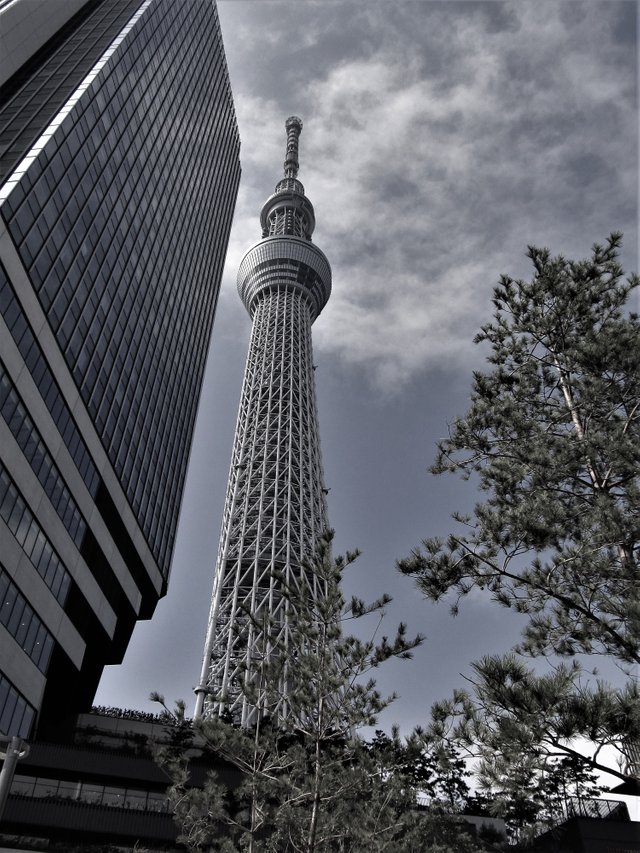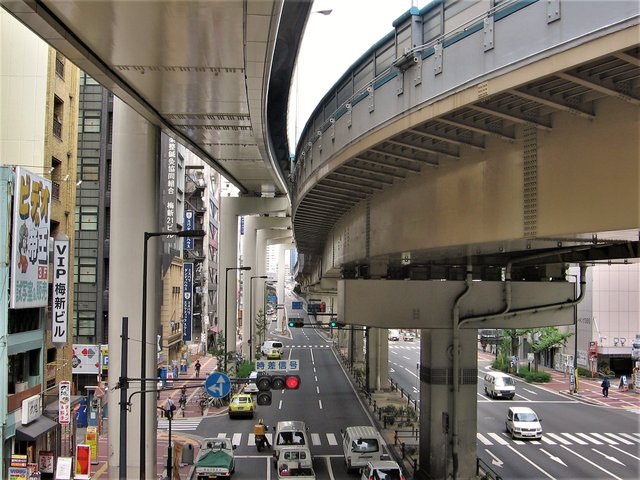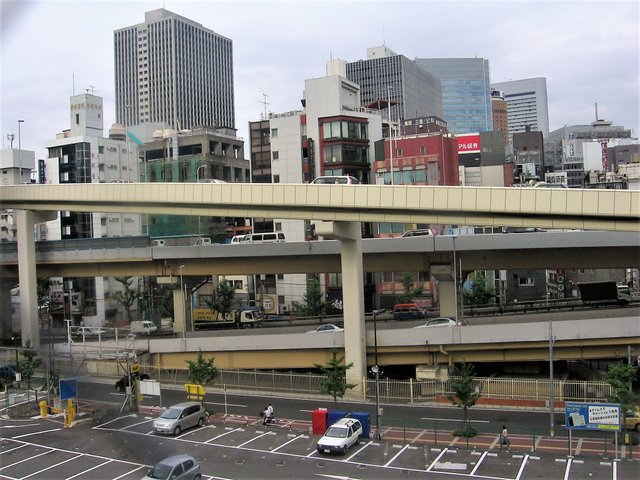Big is just not big enough 👹🍣🎎 Fantastic Japan
2.jpg)
Japan does not only have traditional but also modern life. Both do not necessarily have to exclude each other but can rather coexist in an interesting symbiosis. Although the new and modern probably wins in the end, but then one day it will be part of the old world itself.
Particularly in the large cities it is easy to notice that, in comparison to Europe, there is no significant number of old buildings, and that most residential buildings are more recent. On the one hand, this is due to the Japanese construction method, where even today much is built of wood and after 30-40 years such buildings are simply old in the eyes of many Japanese. Not old and comfortable, but simply old and thus ready for demolition and a replacement. Those who can afford it, build new and more modern, those who are not so well-off have the choice between renovation and modernization, or living in their house as long as the walls and the roof are standing. This contrast can be found even in the inner city districts of Tokyo, when between houses of the latest design you suddenly see a slightly crooked wooden house wobbling happily. But I realize I'm digressing a bit from my actual topic.
Many things in the cities of Asia are large and enormous, Japan has led the way and the neighboring countries are now following suit and in some cases even doing better. In Japan and in Tokyo, many things are no longer brand new, but have instead passed the test of time and have become a firm part of the urban scenery. Like Fuji TV's building on Odaiba Island in Tokyo Bay, for example. This artificial island was wrested and snatched from the sea by sand fillings, and today you can find an entire city district with its own automated railroad line, though construction is still going on. Good things come to those who wait, even here in the Far East.
.jpg)
In the high-rise district of Shinjuku (which probably deserves its own post), you'll find the Tokyo Metropolitan Government Building - Tochō (都庁), which makes a huge impression on me every time I see it. An ensemble of several buildings and towers, on the 45th floor in each of the two highest buildings you can find an observation deck with restaurant and souvenir store. Fantastic view for free, I can only recommend.
.jpg)
I took this photo during one of my trips to Tojo. In the background you can see the new television tower (Sky-Tree), which was not quite finished at that time, and also a great view of the sea of houses and the asphalt canyons of this city, which always fascinates me anew.

The Sky-Tree stands in Sumida on the other side of the city and is with 634 meters the highest television tower of the world and after the Burj Khalifa in Dubai the second highest building of the earth. I was allowed to admire it in various stages of construction and must admit that the city government has successfully given itself another popular landmark. The also created a complete new quarter around the tower, with restaurants, stores and other facilities for the worthy tourist. Old makes new.
%20(16).jpg)


If the space on the ground is not enough, you just have to build up height or even on the water. And this also goes for road construction, I am always stunned about the urban toll highways, which you can admire when you let your eyes wander towards the sky. Particularly in Tokyo and Osaka, those highways are no longer a product of the modern age, but were thrown right into the middle of the cities several decades ago for last century's Olympic Games and or the Expo, and thetell us how to better not to do it. Sure on the passing visitor those elevated roads do not fail in making an impact, but the inhabitants of the cities have never been asked whether they want them here in front of their window. Well, same as everywhere else, of course.
In Yokohama, there's not only the more traditional-looking Chinatown to marvel at, but also a new waterfront neighborhood, Minato Mirai. The "Port of the Future" houses the business center of Yokohama, one of Japan's most important port cities, and presents itself as modern, inviting and muscle-flexing. The symbol here is the Landmark Tower, with 296 meters the second tallest building in the country. Packed with a 5*star hotel (on 20 floors), offices and stores, and definitely worth a visit. As is the entire area around the Landmarktower.
.jpg)
.jpg)
Of course, the Japanese can also build bridges, for example the Rainbow Bridge which leads to the already mentioned district of Odaiba. On two levels you can cross the almost 800 meter long suspension bridge, either by car on two different roads, on the automated and driverless Yurimamome train line or on foot. I recommend the train for the outward journey and then to come back on foot. Sometimes it's a bit of a buzz to the ears, but you also get a fanstastic view of the Tokyo skyline. Especially after sunset, the lights of the city make you want to explore more, even after a long day out sightseeing. There' s always something left to do, so let's sleep later.
That's it for today. Please check in again later for some more photos from the Land of the Rising Sun. I still have a lot to discover, and I'm already looking forward to the next adventure.
.JPG)
.JPG)
.JPG)